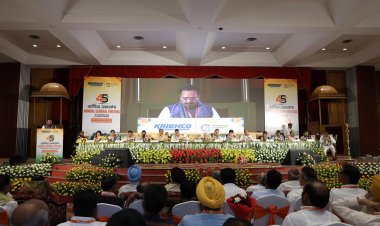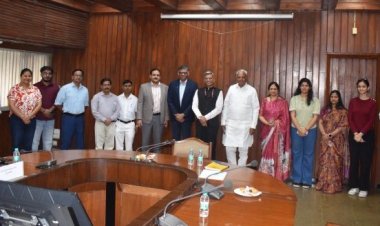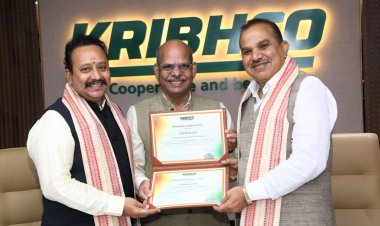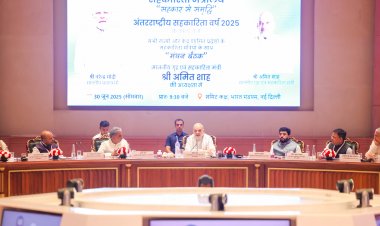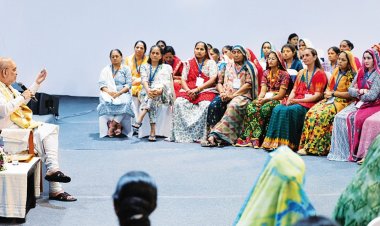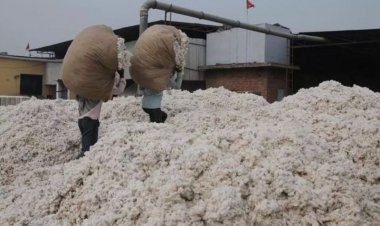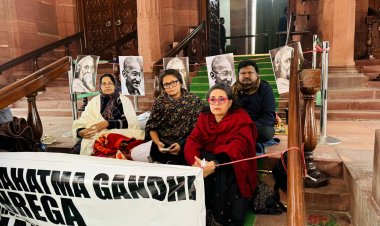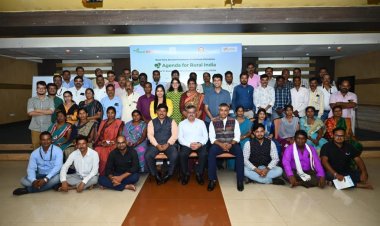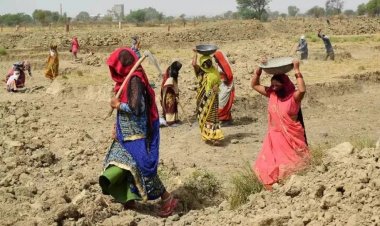“Cooperation” should be a subject in the curriculum; this will make youth more interested: Dr Chandrapal Singh
The youths are getting attracted to the corporate sector today due to the hefty pay packages. They need to be involved with the cooperatives. If “Cooperation” is made a subject in the higher-education curriculum, the youths will also come to know about its prospects. This is what Dr Chandrapal Singh, President, International Cooperative Alliance, Asia-Pacific (ICA-AP) and Chairman, Kribhco, said at the second session of the Dialogue on “Sahakar se Samriddhi: Many pathways” organized by Rural Voice in association with Sahakar Bharati. Dr Singh said that besides the youths, women too should be involved with the cooperative movement.
The youths are not interested in cooperatives today. If “Cooperation” becomes a part of the curriculum, they will learn about its prospects and also get interested. The dysfunctional cooperative societies may be handed over to the youths. Thus, not only will they get employed but they will also be in a position to employ others. This is what Dr Chandrapal Singh, President, International Cooperative Alliance, Asia-Pacific (ICA-AP) and Chairman, Kribhco, said.
Dr Singh was speaking at the second session of the Dialogue on “Sahakar se Samriddhi: Many pathways” organized by Rural Voice in association with Sahakar Bharati. The topic for the second session was “Global experience in cooperation: How India can benefit”. You may watch this session of the Dialogue by clicking on the video link given above.
The country cannot be strengthened economically without the cooperative movement, said Dr Singh. He said that the cooperative movement in India was agriculture-based. If agriculture becomes strong, the cooperative movement will also become strong. He said that there was poverty in every country of the world. It is through cooperative societies only that the poor can be benefited. In countries where this has been adopted, people have become enabled.
Dr Singh said that the youths were getting attracted to the corporate sector today due to the hefty pay packages. They need to be involved with the cooperatives. If “Cooperation” is made a subject in the higher-education curriculum, the youths will also come to know about its prospects. Dr Singh said that besides the youth, women too should be involved with the cooperative movement. They should be given half of the membership of the societies.
Talking about the ICA, Dr Singh said that 12 per cent of the world’s population was associated with cooperatives. There are about 30 lakh cooperatives across the world. We need to learn from the large cooperatives of the world. Their thoughts may be considered. Dr Singh said that training was necessary to run the cooperatives professionally. He said that people were unaware of their responsibilities. The elected persons will have to be taught how to work professionally.
Cooperatives necessary in agriculture, manufacturing and services
Addressing the session, Satish Marathe, Director, Reserve Bank of India (RBI), said that liberalization was necessary but the liberalization of 1991 ignored the cooperatives. Preference was given to private companies and public sector Ratna companies. Marathe said that cooperatives could prosper only when they were brought in all three sectors — agriculture, manufacturing and services. He suggested studying the cooperative movements of Germany, France and the Netherlands — the first for manufacturing and the last two for agriculture.
Marathe said that it was necessary to increase the engagement between cooperative and banking. He also said that the ownership of a cooperative should be separate from its management that focuses on day-to-day affairs. The cooperatives should also be allowed to form companies with 100 per cent ownership. Marathe suggested to the government that it should regulate the cooperatives, but not micro-manage them. Cooperatives should get support from the government as partners. When the cooperative is able to stand on its own, the government should exit. Marathe spoke of the dire need of consumer cooperative societies, which have almost disappeared.
Need to learn from cooperatives in five developed countries
Konda Reddy Chavva, Assistant FAOR, Food and Agriculture Organization (FAO), spoke about case studies of Japan, Denmark, the Netherlands, New Zealand and France. Japan has a national collective called Japan Agriculture Cooperative (JAC), which consists of 694 regional cooperatives. These cooperatives do everything from input supply to farmers to packaging, transportation and marketing. They also make financial services available to the farmers. The JAC serves as the backbone of Japan’s cooperative sector in which the majority are small farmers. When the Japan model was implemented in Bangladesh, it helped end the middlemen.
Chavva said that agriculture cooperatives in Denmark were active in everything from production to marketing. These are major exporters of agricultural products. The ownership rights rest fully with the members of the cooperatives and the profit is divided among them. The cooperatives have a role to play in the entire food chain. They have also played a major role in food security and innovation. They have established themselves as a force in the market and also brought popularity to the farmers’ products. We learn from Denmark that it is necessary to involve the local farmers with the cooperatives. It is also necessary that instead of imposing cooperatives upon the farmers, it is they who should have the ownership rights. Cooperatives have also been helpful in eradicating poverty from the rural population in the long term.
There are 41 cooperatives in the Netherlands. The rules and regulations there are in favour of the cooperatives. In any cooperative there, most of the members are homogeneous. Anything that is no longer relevant to the cooperative framework is constantly eliminated. Chavva said that 40 cooperatives of New Zealand had an annual turnover of $28bn. Despite being a small country, Denmark had 29 per cent of its population as cooperative members. Their contribution to the GDP is 19 per cent. There is a body of cooperatives that connects institutions of all sorts among themselves. In France, about 1,000 cooperatives help their members in various sectors, including the supply chain. They even market the products of the farmers. So, more and more people are willing to become members.
Possibilities for cooperatives in the services sector; social cooperatives also needed
Balasubramanian (Balu) Iyer, CEO, ICA-AP, said that cooperatives could explore several possibilities in the services sector. He said that the contribution of the services sector to India’s GDP was more than 50 per cent but a large part of it was informal. Citing the example of Capricorn from Australia, he said that 17 auto mechanics had set up a cooperative there. Today, there are 25,000 members and its turnover is $2bn. Iyer also said that fundraising options need to be considered for the cooperatives.
Iyer also spoke about the necessity of social cooperatives. He said that a large population of the country was ageing. What is the cooperative sector doing for them? Steps like establishing cooperative hospitals should be taken. This would make better facilities available to the people at cheaper prices. Iyer said that the use of technology could be much helpful in this. Speaking about the significance of raising capital for the cooperatives, he said that several countries had made arrangements for this. Even in the United Arab Emirates (UAE), cooperatives have been allowed to bring IPOs and raise funds from the capital market.



 Join the RuralVoice whatsapp group
Join the RuralVoice whatsapp group

















